You Can Have It All, But Not At The Same Time: What It’s Like To Be A Woman In Space Tech?
13th Mar 2024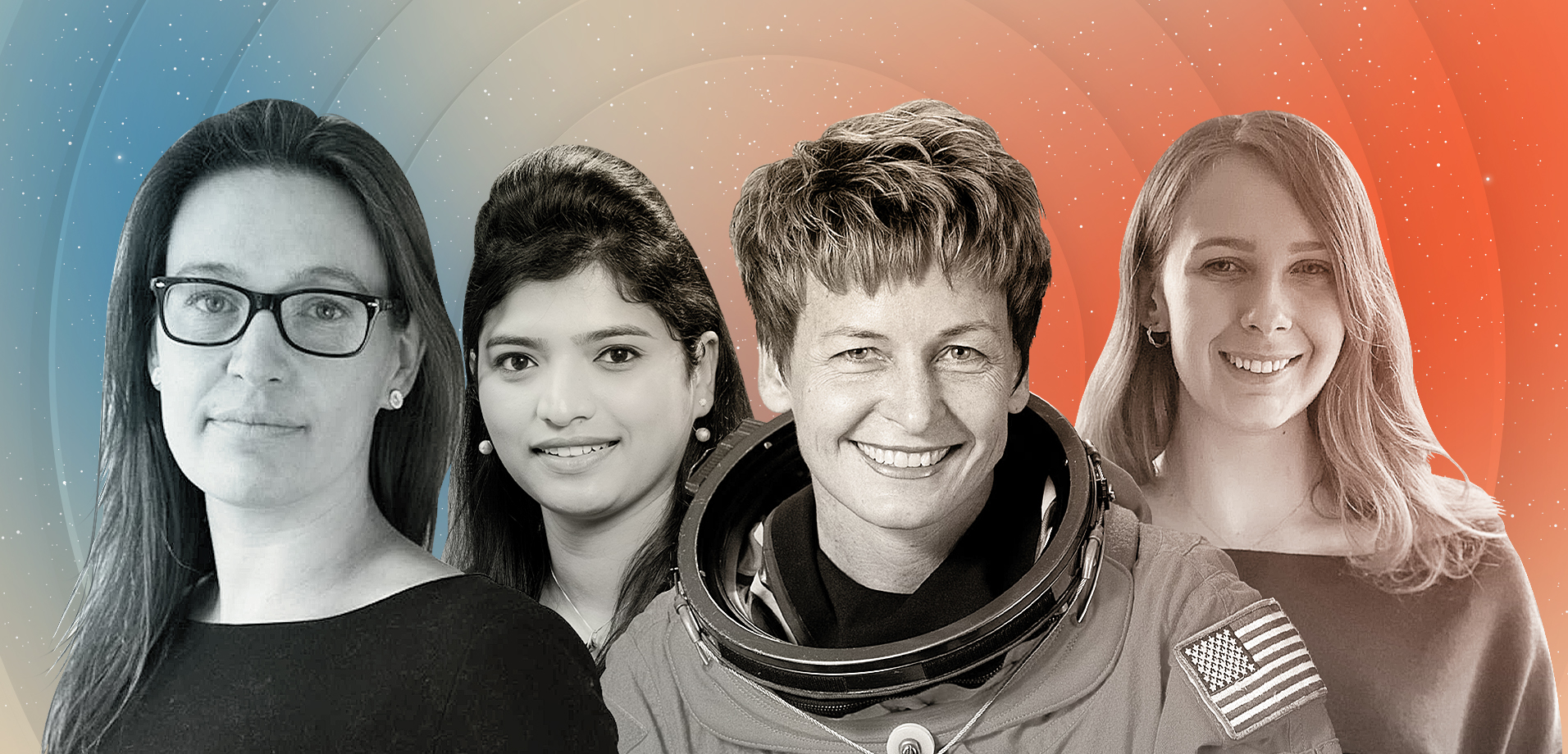
A couple of years ago, MullenLowe London published a video that soon went viral. This short film shows a career day at a primary school in England. Kids were asked to draw a firefighter, surgeon, and fighter pilot. Of course, students worked diligently on their artworks, discussing how strong, fearless and brave these… men are. They were surprised when the women doing these real-life jobs joined them in class.
Many were touched and inspired by the video but admitted they would also draw men for these professions. Many other occupations are worth adding to the list: astronauts, engineers, analytics, technicians, scientists, etc.
For many years, the space industry was considered one of the ‘least feminine’ places to work and build a career. We now all know about the contribution of women mathematicians to America’s space program (primarily thanks to the 2016 movie Hidden Figures), and many have watched the ‘For All Mankind’ series (which is obviously fiction but features many strong, innovative, and successful women in space). But there’s a feeling it’s not enough.
We won’t be recalling here times when NASA (almost) sent Sally Ride to space with 100 tampons or things like that. We want to shift focus to today and tell you more about contemporary women behind well-known companies and agencies.
Ahead of writing this piece, we asked for some thoughts from Peggy Whitson, former NASA astronaut and current astronaut, Director of Human Space Flight at Axiom Space, Jana Spruce, Vice President of Spacecraft at Firefly Aerospace, Rim Elijah, VP of sales in EOS Data Analytics, Camilla Taylor, CFO for Satellite Vu, as well as Dr Mamatha Maheshwarappa, Payload Systems Lead at the UK Space Agency, Claire Barcham, Corporate Services Director at the UK Space Agency, Jodie Howlett, Senior Systems Engineer at the UK Space Agency for contribution. They kindly agreed to answer our questions.
As we celebrate Women in Science Day in February and honour Women’s History Month in March, we want to tell you more about just some of the incredible women of today’s space industry, their career paths, and thoughts about women in science and space tech.
Editor’s note:
Not all of the answers were included in this article. We simply couldn’t fit all of the inspiring, unique, and valuable stories we received in one text. That’s why we’ll follow up with more stories about women in space, their role models, achievements, and vision.
Jana Spruce, Vice President of Spacecraft at Firefly Aerospace
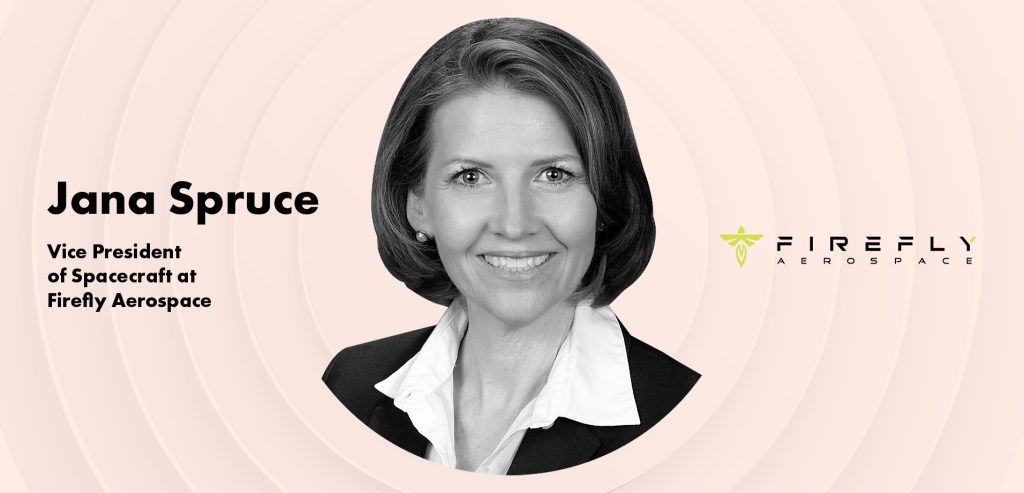
Jana has had a long journey in the space industry. Before joining Firefly Aerospace, she worked at Collins Aerospace and as a System Engineer at Boeing. Currently, she leads spacecraft programs at Firefly, including projects like the Blue Ghost lunar lander and Elytra orbital vehicle.
Jana Spruce is one of those women who has experienced significant challenges and choices when it comes to career and family. Responding to Orbital Today, Jana said that the achievement she is most proud of is her family: “I have a wonderful husband and five amazing kids who keep me laughing and make me proud.”
After being trapped in defined roles as mothers and housewives for centuries, a new generation of women worldwide were overwhelmed with new opportunities, even though they were limited compared to the opportunities available today. Then a new standard started to challenge women – you have to be ‘the best’ in every aspect of your life: you need to be a perfect mom, always calm and understanding; you need to be a happy wife, supportive and caring; think positive, eat healthy, do sport, travel, learn new things, but don’t you dare to stay at home – you need to have a career, evolve yourself, be independent and successful. How can we combine all these things at once and stay mentally sane? The answer is to switch between things and to compromise.
My generation was told “You can have it all,” but there is a caveat to that,” – Jana told us. – You can have it all, but you can’t have it all at the same time.
“It hasn’t been easy. There were times that my career took a back seat to getting an MBA, having kids, or supporting my husband’s demanding job. Regardless of where my focus has been, I have always been learning and looking to apply life’s lessons to a variety of situations.”
What advice would you give to girls and women who are just beginning their careers in STEM?
Be a “Jack of all trades, master of SOME.” Early in your career, try to focus on deeper knowledge in a technical area you enjoy. As you gain competence and confidence there, branch out and find ways to expose yourself to other disciplines and the broader system. The most valuable STEM people are the ones who can see the system as a whole, as well as how their piece fits in.
Women of the UK Space Agency
Many talented women work in the UK Space Agency in various positions – from engineers to Project Leads and directors. All of them have their stories, inspirations, challenges and achievements. We have spoken with some of these women and are glad to share their answers and thoughts about the girls’ careers in STEM.
Dr. Mamatha Maheshwarappa, Payload Systems Lead at the UKSA
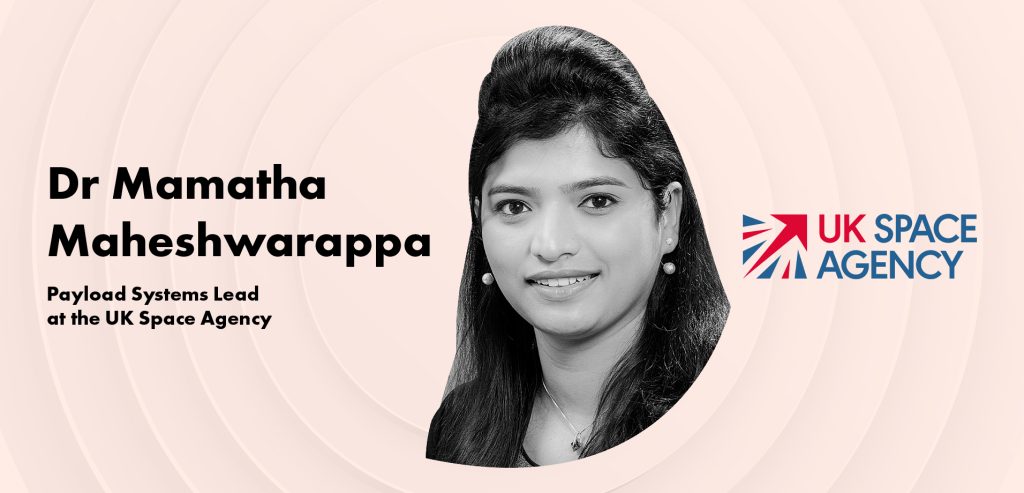
“I was the systems engineer of the first Indian pico-satellite (a satellite that is under 1 kg in launch mass), which gave me hands-on experience working on a satellite mission from cradle to grave. I enjoyed every phase of the project, especially the opportunity to work with scientists and engineers across the Indian Space Research Organisation (ISRO). This inspired me to pursue a career in space exploration and science”, Dr Mamatha Maheshwarappa says.
Her experience includes different engineering positions, which are usually considered the most male-dominated field in STEM. For instance, in the U.S., women make up only 13% of the engineering workforce. Women make up 20% of engineering graduates, but it’s been estimated that nearly 40% of women who earn engineering degrees either quit or never enter the profession.
While this data relates to the American labour market, the situation is common around the world. Still, positive shifts can be seen in all industries, thanks to efforts in women’s communities, changes in our perspectives, and narratives in support of women.
Dr. Mamatha Maheshwarappa, as well as other women in tech, widely contributes to these changes: “I think networks (such as Women in Aerospace-Europe (WIA-E)) are a great way to meet new people and learn from their experience. I am part of such networks and organise several events that are tailored to supporting women in the space and aerospace sector. I am also a STEM ambassador; I visit schools to talk to younger students, make them aware of our opportunities in the space sector, and talk about my own journey.”
What advice would you give to all girls and women just beginning their STEM careers?
Try as many work experiences (in some way or form) across different sectors as possible as early as possible to get a flavour for how different sectors work and to find your passion.
Once your passion is clear, follow it. If you are passionate about something, you will go the extra mile and enjoy your work, and that is very important. – Dr. Mamatha Maheshwarappa.
Claire Barcham, Corporate Services Director at the UK Space Agency
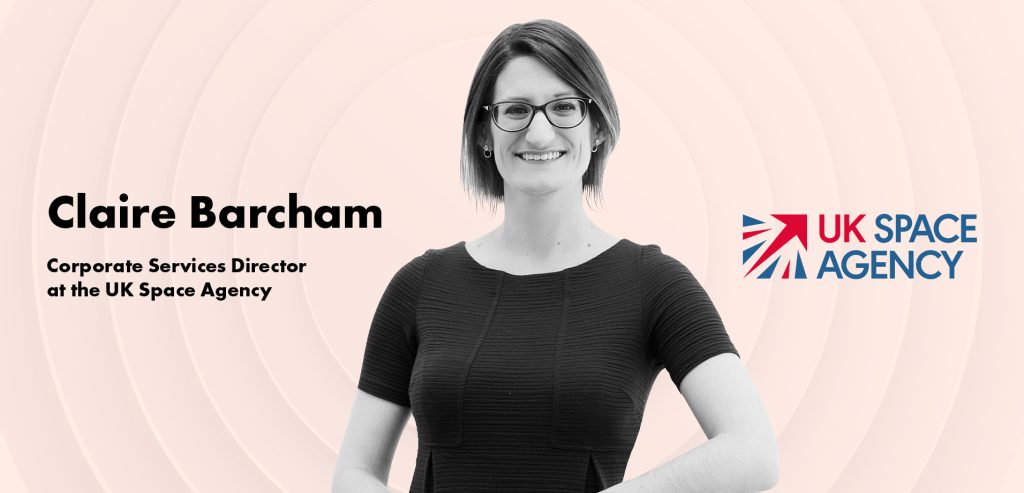
Clare Barcham also supports the idea of helping women by raising awareness and popularising equality: “I’ve spoken with mentees of all genders about the limits we place on ourselves. If we don’t see ourselves represented in sectors like space, it can be easy to assume we don’t belong. It’s important to raise the visibility of the rich mix of people working in space, to help challenge these assumptions and encourage people to see themselves in a space career.”
However, sometimes, the industry’s development unexpectedly provides equal opportunities to women. In recent years, the United Kingdom has scaled up its space programme, set new standards, and provided opportunities to more specialists with different backgrounds.
Claire Barcham, who currently serves as a Corporate Services Director at the UK Space Agency, shares about her achievements at UKSA:
“When I first joined UKSA, I worked on the UK launch programme. I worked with the space sector to define the benefits that the UK could achieve from having our own spaceports and designed our approach to achieving these. I worked with teams across Government to raise public awareness, provide funding to industry, secure international agreements, and introduce legislation to ensure safety. Announcing the first funding awards to build UK satellite launch capabilities was a great moment: it brought together the ideas and efforts of people with diverse expertise – from engineering and business to legal and policy – to help the UK take a giant leap towards becoming a new type of space nation.”
Jodie Howlett, Senior Systems Engineer at the UK Space Agency
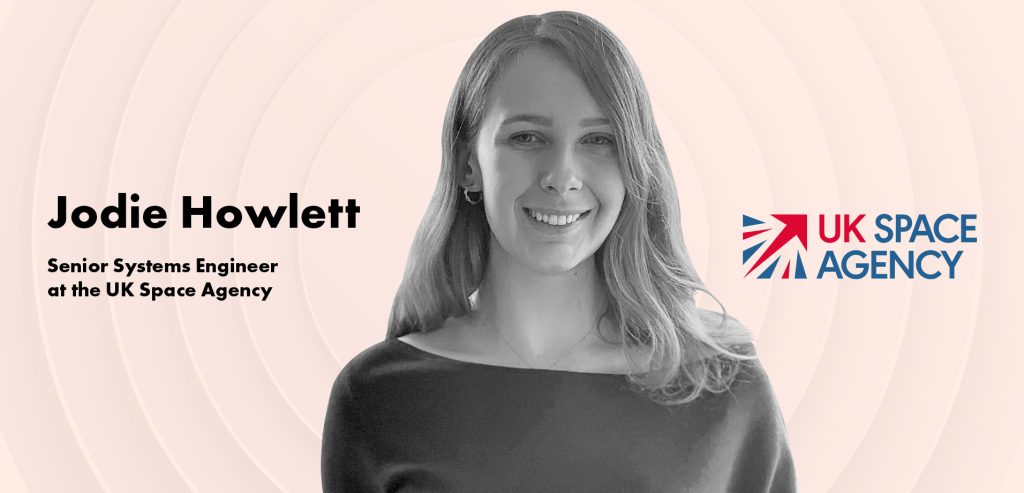
There has persistently existed a challenging gap between learning science in school and understanding how to apply it in a career. Recent findings from the Institute of Engineering & Technology’s Engineering a Better World campaign highlight a striking statistic: 93% of parents wouldn’t support their daughters in pursuing engineering careers. Surprisingly, despite this reluctance, 39% of girls express enjoyment in subjects like Information Technology, Computing, and Design & Technology at school. This research shows a clear interest in STEM areas that doesn’t translate to the number of females entering the engineering industry.
“Space has always been a fascination of mine from a young age, but it took until the age of 22 before I really knew anything about space as a career option!” Jodie Howlett, Senior Systems Engineer at the UK Space Agency says. “Up to then, I studied and enjoyed STEM subjects at school, before going on to do a degree in Mechanical Engineering.”
“ I’ve always found flight interesting and thought for a long time that I wanted to work on planes in some sense. Growing up, jet engines were manufactured right by my hometown, making this a real possibility. As for space, it was never talked about in a career context, just in Physics lessons. I used to think that you had to work at NASA to work in space, and I remember using the school computer to try and find work experience there as a UK national (which, of course, wasn’t possible). So that brief flicker of hope to work in space ended there, and it was back to focusing on aircraft.”
“Fast forward to age 22, it was my penultimate year at university, and I made a last-minute decision to attend the National Student Space Conference—purely to get out of a camping and kayaking trip in the snow! This was my first space event, and I’ve never looked back.”
Today, the problem remains – women are still underrepresented in STEM. However, a new age offers more ways to demonstrate female role models and discuss their achievements. On the other hand, the government should also contribute to these efforts. But what’s more critical – governmental efforts to motivate and support girls on the path to their STEM careers or the success stories of other women?
Both are certainly needed, – Jodie replies.
“It’s important that we give female figureheads in STEM the platforms and reach to inspire girls. For those girls, having a visible role model plants a seed of possibility that maybe one day, they could be doing similar incredible things.” – Jodie Howlett
Dr. Peggy Whitson, Director of Human Spaceflight at Axiom Space
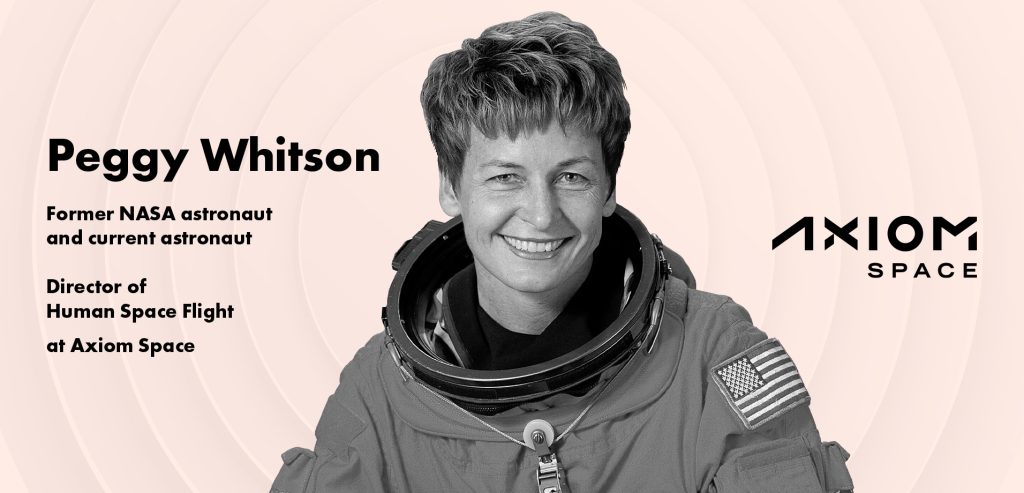
Peggy Whitson is among the most recognisable figures in the US space sector. She is a biochemistry researcher and former NASA astronaut. Dr. Peggy Whitson was the first female, nonmilitary Chief of the Astronaut Office and is currently an astronaut for Axiom Space. Whitson holds the record for spending the most time in space among all Americans and women, totaling 675 days.
It’s hard to overestimate the first Moon landing and humanity’s first steps on its surface. It was a powerful moment of inspiration for many people around the globe, including Dr. Whitson: “Growing up in rural Iowa, space was not the first thing on my mind. But when I watched the Apollo astronauts take their first steps on the Moon, that was life-changing for me. I was inspired by what this significant milestone meant to the world.”
“When I retired from NASA, I knew I wanted to continue to be a part of space. However, I wasn’t sure how I would do that. I began working with Axiom Space and got the opportunity to fly again ultimately serving as the first female commander of a commercial space mission to the International Space Station. I’m excited to be a part of commercial space. At Axiom Space, we’re working on building Axiom Station, the world’s first commercial space station. With Axiom Station, we have an opportunity to conduct groundbreaking research in microgravity and expand access to countries, institutions, and individuals with new ideas fueling a human economy beyond Earth,” Dr. Peggy Whitson told us.
Space or any other STEM career might be challenging, but dedication and hard work are key to success: “There are so many career opportunities in STEM. We need people with different backgrounds and unique perspectives to help solve some major challenges in space.”
Stay focused on your goal, and remember your path may not always be a straight line. – Dr. Peggy Whitson
What advice would you give to girls and women just beginning their STEM careers?
“Find your passion and work hard to be the best you can be at doing what you love. Take advantage of the opportunities you are given. Look for mentors to provide guidance throughout your life. Mentors can foster your growth, serve as a great resource, and can help illuminate possibilities.”
Rim Elijah, VP of Sales in EOS Data Analytics
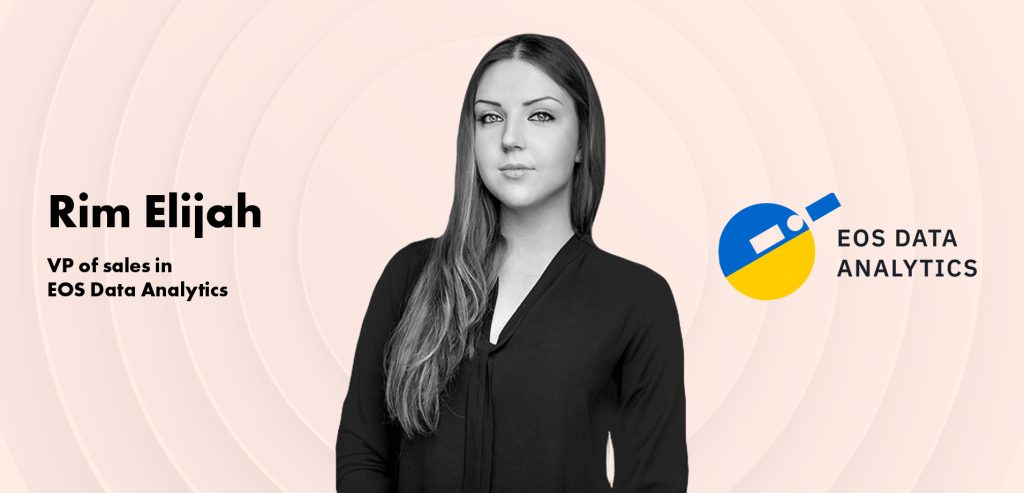
Rim Elijah joined EOS Data Analytics in early 2020. She holds a double degree in business administration and political science from Stockholm University.
She is responsible for closing deals, scaling up ongoing projects, and developing and implementing process control within the sales department. In addition to her primary responsibilities, Rim was also involved in EOSDA’s launch of the first agri-based satellite in 2023.
The fast-evolving space industry requires not only tech specialists but also people experienced in various fields such as PR, financing, sales etc. However, the stereotype that space is complicated and only requires engineers prevents young talents from joining the dynamic space sector.
Rim told us she had similar doubts when EOS Data Analytics invited her to the team. “Initially, the space domain seemed out of reach for me. Like many, I viewed it as an exclusive field for those deeply entrenched in physics or astrophysics, far removed from my background in business administration and political science,” – Rim shared. “Despite declining it twice due to self-doubts about my fit in the space industry, the encouragement from my family, the company’s belief in my potential and a personal quest for new challenges nudged me to reconsider. So, I decided to step into the unknown, armed with curiosity and determination.”
Rim says she clearly sees positive dynamics when it comes to gender diversity in the company: “At EOS Data Analytics, we’ve made a concerted effort to cultivate an inclusive environment, where approximately 50% of our team are women. This diversity spans across various departments, from product development to science, underscoring our commitment to leveraging talent based on expertise and motivation rather than gender.”
Advice to all girls and women who are just beginning their careers in STEM:
“For girls and women embarking on their STEM careers, my advice is rooted in my own journey: believe in yourself and remain steadfast in your goals. The path may present challenges, including scepticism or underestimation from others, but holding your ground and proving your worth through hard work and perseverance is key.
Building a strong support network and finding mentors in your field can significantly enhance your journey. Engage with communities, both within and beyond your immediate domain, to broaden your horizons and impact. Platforms like LinkedIn offer invaluable opportunities to learn from leaders in your field.
Remember, the space industry or any STEM field isn’t reserved for a select few; with determination, motivation, and continuous learning, you can carve out your place and achieve your dreams.”
Always aim to think outside the box, explore beyond the conventional paths, and never stop expanding your knowledge and skills. – Rim Elijah
Camilla Taylor, Chief Financial Officer at Satellite Vu
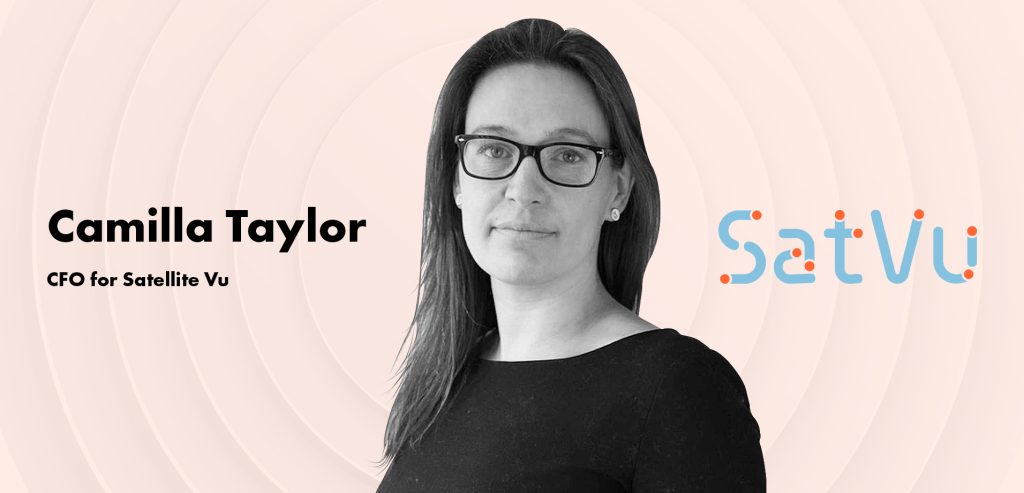
The growth of the space industry and the emergence of private space companies created new market opportunities not only for engineers or scientists but also for people from various fields and with diverse experiences. Still, having opportunities doesn’t mean you win.
While many activities are aimed at helping women with their careers, knowledge, skills, and perseverance are required for all genders.
“I’ve generally tried to just get on with my career without thinking too much about the darker sides of what I have encountered from a bias or gender inequality perspective – I try not to take things personally as I feel a lot of what happens is unconscious, but what I have felt change over time, is my proneness to calling out / saying it how it is”, Camilla Taylor shared.
“I’ve largely lacked female role models in the places I have worked (and hear this is not a unique experience), which I believe is a real problem, and now turns out to be one of the things that motivates me to show up and persist with finding a way of working that I feel is compatible with my young kids (who are 3 and 5).”
There are many reasons that fewer women hold senior roles in Space (and this is not unique to Space) – but I suspect the lack of role models is one of them – and that motivates me. That said, I’m sure my choices aren’t for everyone – it’s important not to pretend that it’s all straightforward!” – Camilla told us.
What advice would you give to girls and women just beginning their STEM careers?
“Practical advice – and not just for women: The courses I come back to again and again in my work (and life) were the ones about statistics, quantitative methods, econometrics and experiment design (hypothesis setting and testing), and at business school, decision theory, which all continue to contribute to how I think about unknowns and how I structure my enquiry to answer questions or assess other people’s logic when they come with a problem/solution/inference.
The best piece of advice I was given early in my career was to find a person who was a bit of a visionary and had places to go, and grab onto their coattails and join them for the ride. I found an exceptional entrepreneur and helped him build a business. I think the advice applies to any early career situation, but also make sure you feel your values align.”
Final words
Our world is (still) not perfect – we are struggling to reach 100% equality and have to fight lots of stereotypes from past centuries. However, it doesn’t mean such things should prevent you from dreaming, studying, working, and pursuing the career of your dream. No matter the gender, the secret to success is the same – work hard, be creative, be strong and patient, choose your goal and do the best you can!
OrbitalToday team is grateful to Jana Spruce, Dr. Mamatha Maheshwarappa, Claire Barcham, Jodie Howlett, Dr. Peggy Whitson, Rim Elijah, Camilla Taylor and everyone who helped to make this material about women in space possible! More is yet to come…



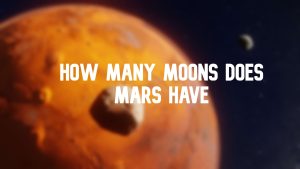

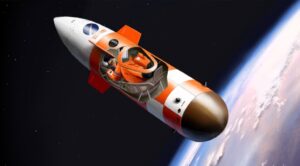
Thank you for your comment! It will be visible on the site after moderation.